Taking care of your tires and making sure that they’re properly inflated, installed, and balancing is critical to the safety of your vehicle and yourself.
Maintaining the balance of your tires isn’t all too complicated and can extend their lifespan and performance. You might be surprised at how easily they can be thrown off, which makes it important to check their balance regularly and know how to rebalance them.
Coming to a sudden, harsh stop, hitting a noticeable pothole, or natural wear over time can all lead to your tires spinning out of balance.
At Shine Armor, we care deeply about the safety, performance, and presentation of your vehicle, and we know you take pride in your car on the inside and out.
Here’s how to check if your tires are out of balance and what to do if they are.
When Should You Balance Your Tires?
There are several ways to tell if your tires need maintenance. Whether it’s rebalancing, rotation or replacement, they’ll let you know if something is wrong.
New Tires
Anytime you buy yourself a new set of tires, you want to make sure that they’re installed correctly, which includes checking and balancing them.
You could do this yourself if you personally installed your new tires, but more often, this service is included when you have professionals do it at the shop.
You also want to make sure that they hold on to that new tire shine as long as they can, which is extremely easy with our Graphene Tire Shine. Even if you’ve got a few years on them, we can help get them looking back to new.
Vibrations or Noises
Unbalanced tires have a few ways of letting you know they’re not properly in place, and one of the most easily noticeable is a loud vibration sound. Not only will you hear it, but you’ll more than likely feel it as well.
While vibrations can mean a couple of things when it comes to your tires, it never means anything good. If you’re hearing something coming from one of your tires, it could mean you have uneven tread wear or an imbalance problem.
If you’re hearing something coming from one of your tires, it could mean you have uneven tread wear or an imbalance problem.
Typically vibrations from imbalanced tires will be more noticeable at speeds above 45 miles per hour. It’s important to monitor your tire health regularly. Every few weeks, take a moment to turn down the music and listen for anything out of the ordinary while driving.
Lights in the DashSimilar to the noise and vibrations, lights in the dash can mean any number of problems with your entire vehicle, not just your tires.
Regarding your tires, there are two lights you want to keep an eye out for are the anti-lock braking system light and the low-pressure light. There isn’t one specifically for imbalanced tires, but these two will be enough to let you know something is wrong.
The anti-lock braking system light is easy to identify since it’s just the letters “ABS,” and the low-pressure light looks like an exclamation mark inside of a little cup.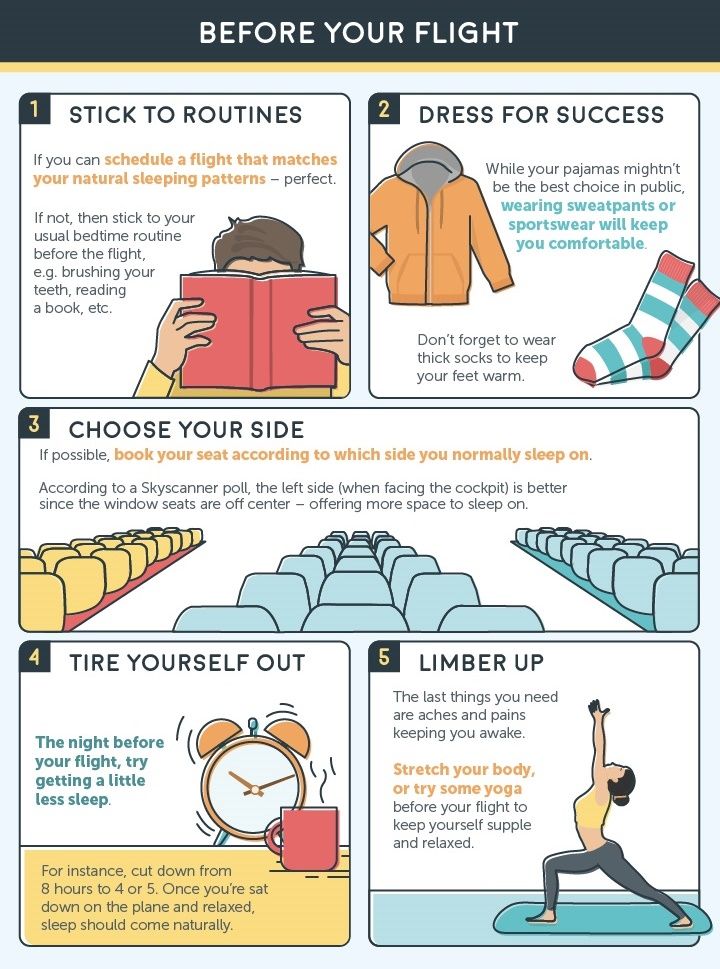
If you have a car older than 2012 and you live in the United States, your car might not have an ABS light as they weren’t mandatory yet, so you’ll just be looking for the low-pressure light.
Uneven Tread Wear
There are a few different types of uneven tread wear to be aware of, but we’re looking for patch-wear specifically for imbalanced tires.
Patch-wear is random and patchy (hence the name), so when you’re checking your tire tread, make sure to go around the whole tire.
Using a quarter, stick George Washington's head in between the treads. If you can still see the top of his head sticking out, that means that there’s less than 2/16th of an inch, and your tires have been worn down to the point when you should consider a new set.
How Often Should You Balance Your Tires?
Letting your tires go without being balanced for too long can have dangerous and lasting consequences. Particularly the amount of uneven wear on our tread.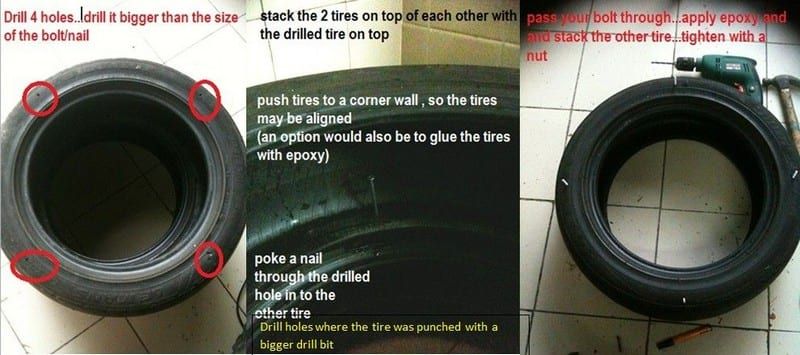
Your tires will wear down over time naturally, but if they develop patchy and erratic spots in the tread, they decrease your vehicle's performance, the traction power that they can have and lead to potential blowouts at high speeds. We’re sure we don’t have to tell you how unpleasant that would be.
It’s recommended that you test your tire tread regularly, at least once every month or so. Then, rebalance your tires every ten to twelve thousand miles and get them rotated every other time.
How To Balance Your Tires
There are three ways to go about balancing tires, but only one of them you’ll be able to do from home- Unless you have professional auto-mechanic machinery.
We won’t spend too much time going over the techniques to balance tires that are mostly exclusive to the shop, but if you’re excited about learning something new, we’ll cover them briefly.
Generally speaking, balancing tires requires spinning or balancing the tires to determine if and where they aren’t balanced and then placing weights along the rim to adjust.
Road force balancing is the future of tire balancing processes. It uses a high-tech machine that looks like a large rolling pin, which presses against your tire as it spins.
The machine presses against the tire and detects even the smallest off-balance spots. It can determine the difference between healthy and unhealthy tread wear.
It’s certainly the most accurate option, though not quite accessible from home.
Dynamic Balancing
Another mechanic-only tactic for balancing is dynamic balancing. Dynamic balancing involves a machine that spins the tire at high speeds and feels where it's unbalanced and by how much, similar to the road force balancing.
This technique isn’t as accurate as using the road force balancing, but it’s very easy for a mechanic to adjust the weights on your wheel fairly simply and quickly.
Static Balancing
The process used at home is an older method, but it still works well.
Static balancing uses an unmoving balancing post or spindle that the tire is placed on wheel-face up. In the center of the post is a small bubble and circle balance, the goal being to line up the bubble into the circle.
If the wheel is unbalanced, then the bubble will clearly reflect that, and the user can adjust as necessary by attaching weights to the rim to counterbalance the offset.
The process, from start to finish, goes as follows:
 You want the bubble perfectly in the center of the circle before you put the tire on.
You want the bubble perfectly in the center of the circle before you put the tire on. Getting your tires rebalanced might cost between $50 and $100, but why not learn how to do it yourself? Using a static balancer, the process is certainly not that complicated, and you can get similarly accurate results as the fancy machines.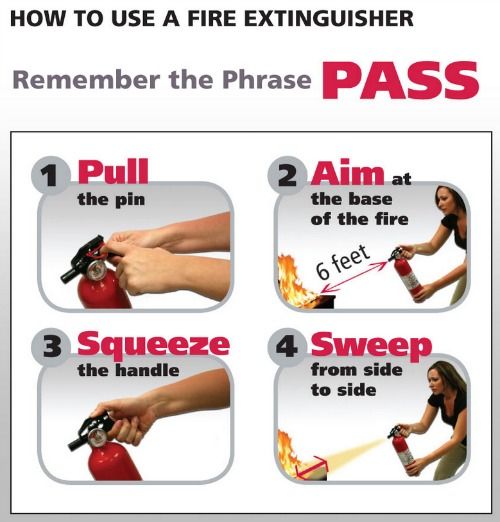 However, if you have a hard time, you should take your wheels to the mechanic.
However, if you have a hard time, you should take your wheels to the mechanic.
Unbalanced tires can result in uneven tread-wear, suspension damage, and blowouts, so it’s definitely a problem that you want to be solved sooner or later. Otherwise, you might be picking out a new set of tires altogether, if not worse.
References:
ABS Anti-Lock Braking History | Drivespark
Balancing Post | Amazon
How Does Unusual Tread Wear Affect The Performance of Your Vehicle | Cashcarbuyer.com
The first thing you think of when your car needs “tire balance” is taking it to trusted mechanics. And you just need a small budget of about $15 – $80 for balancing tires. However, what else is great when you can DIY tire balance? If you have a basic knowledge of the mechanic and want to save money. We’re sure that this topic is right for you. Let’s find out: How to balance tires at home?
Balancing a tire at home: Is it possible?(Photo: pinterest. com)Is A Tire Balance Really Needed For Your Car?
com)Is A Tire Balance Really Needed For Your Car? Over time, the wheels may encounter some problems that cause the vehicle to vibrate and be difficult to control. At this time, tire balancing is a corrective action to help your car work more stably and safely. Wheel assembly consists of 2 main parts: rubber tire and rim. The wheel is considered to be in balance when the weight of the rubber tire and rim is evenly distributed around the axle.
However, the tire manufacturing process may not guarantee this balance is perfect. Or after a long time of use, especially often traveling on bad terrain, the wheels will soon appear unbalanced. Or after a long time of use, especially often traveling on bad terrain, the wheels will soon appear unbalanced. These causes cause the wheels and steering wheel to vibrate, creating an unstable and unsafe driving feeling.
Therefore, the tire balancing method was developed to overcome this situation. Tire or wheel balancing is the process of balancing the weight of tires and wheels so that it spins smoothly.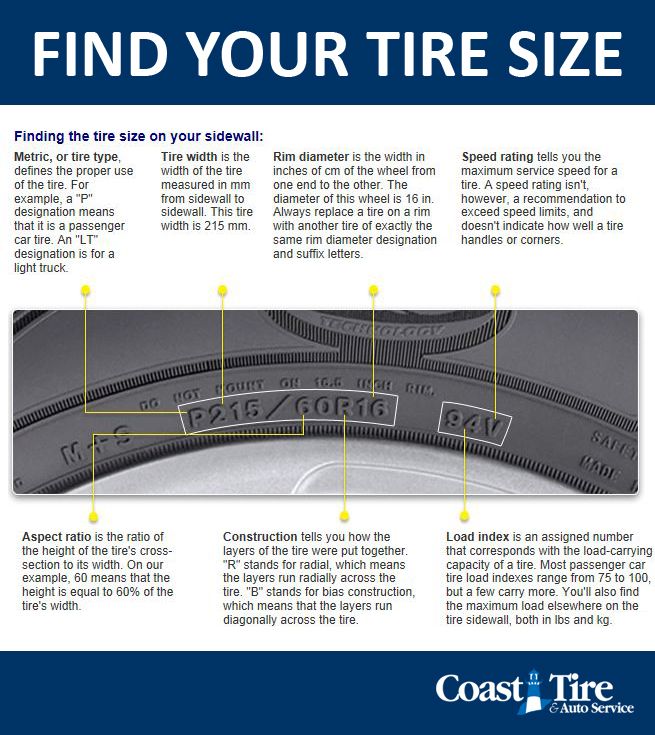 Balancing involves placing the wheel and tire assembly on a balancer, setting the center of gravity of the wheel, and rotating it to identify the position of the weight. To balance the tires, it is necessary to use a tire balancer, measure the weight of the unbalanced part and then add weights of lead on the opposite side. This helps limit the vibration of the steering wheel that affects the driver’s control of the car.
Balancing involves placing the wheel and tire assembly on a balancer, setting the center of gravity of the wheel, and rotating it to identify the position of the weight. To balance the tires, it is necessary to use a tire balancer, measure the weight of the unbalanced part and then add weights of lead on the opposite side. This helps limit the vibration of the steering wheel that affects the driver’s control of the car.
Wheels after being balanced will have higher durability (even wear in positions; no rollover; no effect on other details such as bearings, wheel axles, and steering wheel), helping to improve quality steering.
In the next step, we will move on to the most anticipated part of this article: How to balance tires yourself?
How To Balance Tires At Home?Balancing wheels at home can help you save from $10 to $50 or more depending on service centers and you don’t want to take your time to visit mechanics. If you already have a background in mechanical.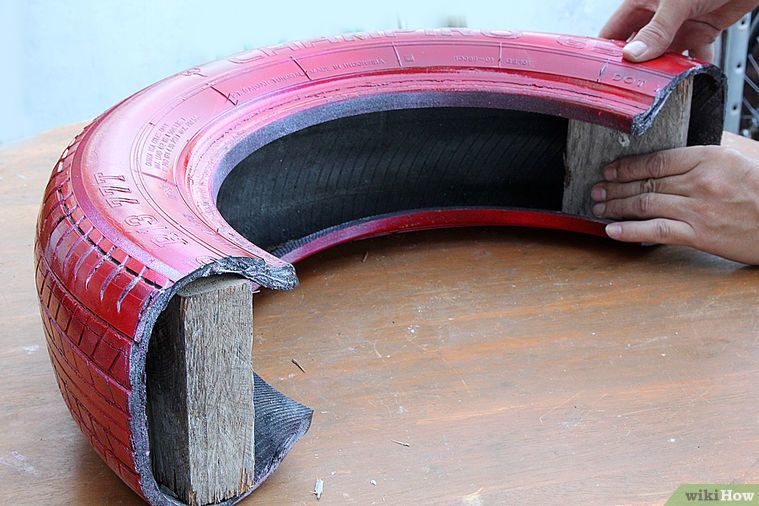 Why not give it a try? In this section, we will divide it into 2 ways in case you have a balancer and in case you don’t have this tool. Whatever the case, you don’t need a lot of specialized tools to balance your own tires. Let’s get started!
Why not give it a try? In this section, we will divide it into 2 ways in case you have a balancer and in case you don’t have this tool. Whatever the case, you don’t need a lot of specialized tools to balance your own tires. Let’s get started!
Bubble balancers are known as static balancing. This is a good method and you can do it at home. All you need is a balancer or a spindle and some basic tools. This method uses a non-moving balance post or a rotating shaft on which the tire is placed on the wheel surface. In the center of a pillar are a small bubble and a balanced circle. All the setup makes sure to put a bubble in the circle. If a bubble is not in the middle of the circle, you can take a screwdriver to gently adjust it. When the wheel is in an unbalanced state, that will be shown in bubbles and drivers can adjust by adding weights to the rim to create balance. Starting with detailed steps:
Home tire balancer: It’s not hard for you to own this machine (Photo: pinterest. com)Step 1: Take the wheels off your car
com)Step 1: Take the wheels off your carThis is the first step that almost all methods must do. When removing tires, drivers should follow the rule of removing and installing wheel screws diagonally, ie star wing, not rotating the order in a clockwise direction. This method will help the wheel not be deflected to one side, but steadily in and out in all directions.
Step 2: Remove any weights or dirt on your wheels.In this step, don’t forget to remove the weights currently put on your wheel to turn the wheels into a blank state. Before you put the wheels into the balancer, if it’s a used tire on your wheel, you should inspect the tires to make sure there’s no rock or any other objects stuck in the threads and remove them. Because it can affect the result of balancing, it will add more weight. We need to clean the surface with isopropyl alcohol or some specialized washes to make sure the whole inner edge is clear.
Step 3: Place the assembly wheel on the balancer deviceAll you need to do in this step is to follow the instructions that are attached to the balancers to set it up.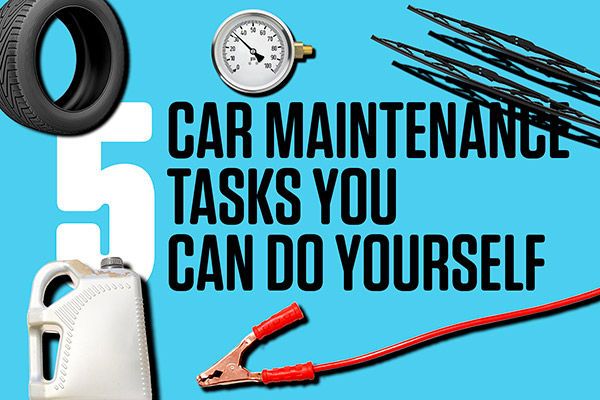 When balancing a heavy wheel, you don’t really have any problem, but with a light wheel, sometimes it doesn’t push all the way down so just push the wheel down and make sure it’s fully on the balancer. With this method, it will take you a little time to wait for your wheels to settle into a balanced position or stationary.
When balancing a heavy wheel, you don’t really have any problem, but with a light wheel, sometimes it doesn’t push all the way down so just push the wheel down and make sure it’s fully on the balancer. With this method, it will take you a little time to wait for your wheels to settle into a balanced position or stationary.
After waiting for your wheels completely stop by naturally. We will find out where the bubble is on the actual wheel itself. If the bubble is off-center, and it’s pointing out in a certain direction. It means that there’s less weight in that direction on your tire. It’s a good indicator to tell you where weights need to be applied. Once you’ve discovered the tire is out of balance, you can use chalk or marker to mark the points to put more weight on.
Step 5: Put weights and inspect againWhat we’re going to do in this step is slowly drop on weights until the bubble is in the middle. You can just stack them around when the bubble is positioned perfectly in the middle. We will know exactly how many weights to tape on. Each of the weights is only a quarter of an ounce. Follow the enclosed instructions to attach the weight to the specified position. During this process, you need to make sure the weights are attached properly and firmly so that they do not come off when the vehicle is traveling at high speed. After placing the additional weight on the wheel, you need to double-check that the tire is completely balanced. Return the wheel to its original position and start a safe driving journey!
We will know exactly how many weights to tape on. Each of the weights is only a quarter of an ounce. Follow the enclosed instructions to attach the weight to the specified position. During this process, you need to make sure the weights are attached properly and firmly so that they do not come off when the vehicle is traveling at high speed. After placing the additional weight on the wheel, you need to double-check that the tire is completely balanced. Return the wheel to its original position and start a safe driving journey!
Balancing without a home tire balancer: Is it possible? Our answer: It can be doable, however, the process can be a bit more complicated than using a static balancing method and may not give you the results you want.
Just like the static balancing method, you need to check all stones, nails, foreign objects stuck on the tread surface. You also need to remove all weights that are mounted on the rim. A special feature of this method is that you will not need to remove the wheel from your vehicle because this technique is simulated based on the dynamic balancing method. Instead, you would locate the approximate 12 o’clock position on the tire and use chalk to mark the position. You will then attach a weight to the marked position.
You also need to remove all weights that are mounted on the rim. A special feature of this method is that you will not need to remove the wheel from your vehicle because this technique is simulated based on the dynamic balancing method. Instead, you would locate the approximate 12 o’clock position on the tire and use chalk to mark the position. You will then attach a weight to the marked position.
Accelerate your car to a speed that begins to vibrate and slowly increase the speed (about 5 mph). While it is vibrating, attach a new weight about 45 degrees from the marker. You continue doing this until there are no points with a higher vibration rate.
If there is still vibration, rotate the wheel another 45° and redo this process. It will help you find the position you need to add the extra weight and complete the balance!
When Do You Need To Balance Your Wheel?According to the manufacturer’s recommendations, you should balance the tires around 7000 miles/time. The best way to follow this rule is to have your wheels balanced every time you have a schedule to change the engine oil. Besides the fixed schedule, when you notice some symptoms below, it means that your car needs to be balanced:
The best way to follow this rule is to have your wheels balanced every time you have a schedule to change the engine oil. Besides the fixed schedule, when you notice some symptoms below, it means that your car needs to be balanced:
>> Related post: 5 Symptoms Of Unbalanced Tires In Your Car
SUM UP: How To Balance Tires At Home?What will happen If your tires are imbalanced? It’s not only a big threat to your safety when driving a car but also causes significant damage to other parts of your vehicle. It will be helpful when knowing that you can do this important maintenance at your home. If you understand mechanicals because in most cases, drivers are always advised to go to the mechanic to finish this step. Actually, balancing wheels is not a completely complicated problem. It will take you about 30-60 minutes to balance all 4 tires.
It will be helpful when knowing that you can do this important maintenance at your home. If you understand mechanicals because in most cases, drivers are always advised to go to the mechanic to finish this step. Actually, balancing wheels is not a completely complicated problem. It will take you about 30-60 minutes to balance all 4 tires.
By the way, we want to note that you should balance all tires at the same time. If there is a problem with vibration, all four tires are usually balanced at the same time. The reason is that it is difficult to distinguish which tire is the cause of the vibration. If only one tire is repaired, just rebalance that tire. However, when you are planning to balance your wheels at home, you should remember this: Safety should be your priority. If you are not sure about the steps to do this process, don’t hesitate to take your car to the repair center.
Wheel balancing is one of the measures that ensure the stability of the car on the road and affect traffic safety. Many car owners believe that only service stations can do high-quality balancing. They are partly right, but it is not always possible to contact the masters, and it is impossible to delay the procedure. In this situation, you can do the balancing of the wheels with your own hands in a garage. There are ways to carry out this procedure without professional equipment. nine0003
Many car owners believe that only service stations can do high-quality balancing. They are partly right, but it is not always possible to contact the masters, and it is impossible to delay the procedure. In this situation, you can do the balancing of the wheels with your own hands in a garage. There are ways to carry out this procedure without professional equipment. nine0003
Contents
1 Why balancing is needed
2 How often to carry out
3 Signs of imbalance
4 Balancing methods
4.1 Without wheel removal
4.2 On a homemade stand
4.3 On machine
4.4 Balancing with pellets
4.5 Video: do-it-yourself wheel balancing
5 Errors during procedure
Uneven tire wear or disc damage lead to imbalance, that is, a violation of the distribution of the mass of the wheels relative to the horizontal and vertical planes. There are two types of unbalance:
There are two types of unbalance:
There are two types of unbalance: static and dynamic
Unbalance causes the wheels to vibrate while driving. The imbalance of the wheels, especially when driving at high speed, impairs handling, increases the length of the braking distance, and leads to premature wear of the running gear.
Unbalanced wheels while driving at high speed cause loss of control. But even if the accident did not happen, constant vibration renders the hub bearing unusable, and over time, the entire suspension system of the vehicle breaks down. nine0003
The task of the procedure is to restore balance to the wheels during rotation. The result of balancing is a uniform distribution of the mass of the wheel relative to the axes of rotation.
The result of balancing is a uniform distribution of the mass of the wheel relative to the axes of rotation.
There are no clear and specific recommendations for all vehicles on the frequency of balancing. It all depends on the operating conditions of the vehicle, the condition of the wheels, and other factors. Experts recommend balancing:
The main signal of imbalance is the appearance of vibration. The intensity of the vibration transmitted to the passenger compartment depends on the degree of imbalance. Sometimes at speed the car starts to literally tremble with the whole body.
The intensity of the vibration transmitted to the passenger compartment depends on the degree of imbalance. Sometimes at speed the car starts to literally tremble with the whole body.
The nature of the vibration indicates which wheels are unbalanced:
Other signs of imbalance are increased fuel consumption, tire noise while driving, uneven wear and regular flat tires. nine0003
Using the advice of experienced drivers, you can independently carry out balancing in the old fashioned way without using a special machine. This will take more time than the master would spend in the service, but will save money.
If desired, wheel balancing can be carried out independently in a garage
To perform the procedure yourself, you will need the following tools and materials:
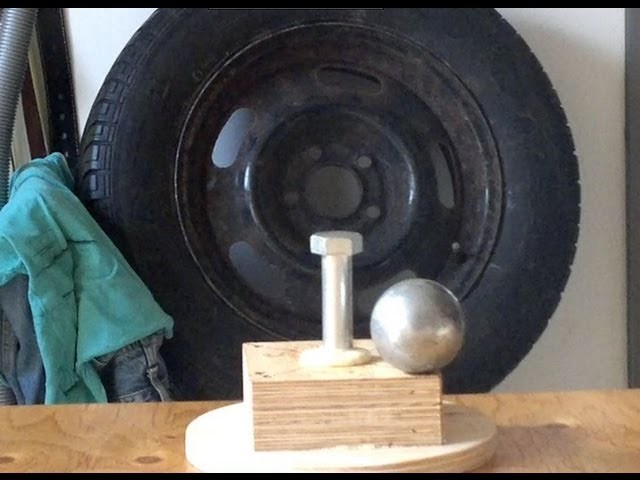
Interesting! To balance wheels on cast or forged rims, it is advisable to purchase self-adhesive weights. But in winter, such weights can come unstuck from temperature changes.
Balancing weights required for balancing
Self balancing process consists of the following steps:
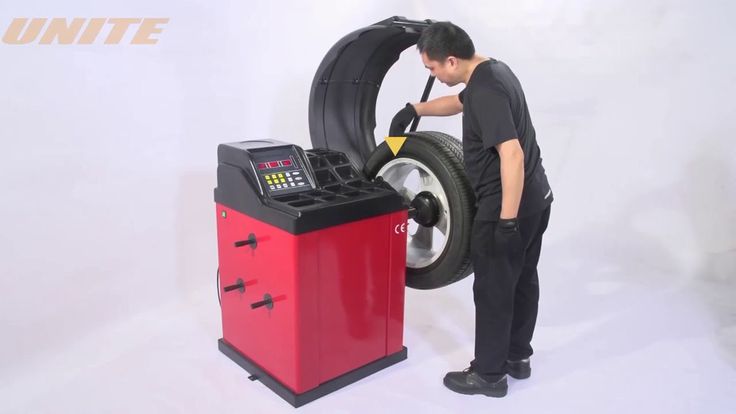 After that, spin the wheel and wait for it to stop. The weights should be at the bottom. If it didn’t work out, light weights are removed and heavier ones are stuffed. It is not recommended to use more than 60 grams of cargo per wheel.
After that, spin the wheel and wait for it to stop. The weights should be at the bottom. If it didn’t work out, light weights are removed and heavier ones are stuffed. It is not recommended to use more than 60 grams of cargo per wheel. In this sequence, carry out the procedure with each wheel. To check the correctness of the balancing performed, you need to drive a car for at least ten kilometers at a speed of more than 90 km / h. If there are no shocks and taps during movement, then everything is done correctly. If the procedure is performed incorrectly, specific shocks to the steering wheel appear.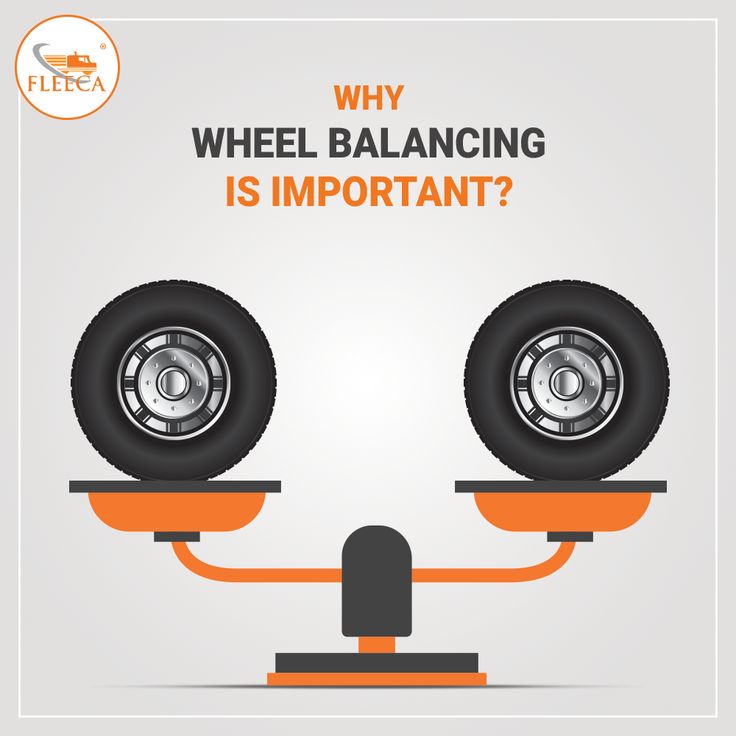
For your own confidence, at the first independent balancing, you can undergo diagnostics at the service station. If the masters confirm that everything was done correctly, in the future you can do the procedure yourself. nine0003
Important! Self-balancing in the garage is only permissible in case of static imbalance. The elimination of dynamic imbalance requires the use of equipment. Experts recommend contacting the service if the car has worn tires and old bent wheels. It is impossible to balance such wheels without special equipment.
You can make the balancing process easier by making a homemade stand in the garage. In this case, you do not have to remove the brake pads from the wheel and loosen the stepped nut. nine0003
A self-made stand simplifies the wheel balancing process.
The stand is assembled from an old hub with a working bearing. The hub is mounted on the frame in such a way that the wheel rotates freely, and the whole structure firmly rests on the surface. It is convenient to use vertical metal racks as a frame, between which the wheel is attached. Further balancing steps are the same as the previous method of performing the procedure.
It is convenient to use vertical metal racks as a frame, between which the wheel is attached. Further balancing steps are the same as the previous method of performing the procedure.
Even an experienced motorist in garage conditions carries out balancing “by eye”. Therefore, there can be no complete confidence in the correctness of the process. In specialized workshops, balancing is carried out on computer-controlled machines.
Modern workshops are equipped with CNC balancing machines
The machine consists of a cone-shaped support for mounting the wheel, a rotating electric motor and sensors. The wheel rotates during tire fitting, and at the same time the computer determines the vibration and pressure. The readings of the sensors help to accurately calculate the weight and installation location of the weights. nine0003
Workshops are equipped with two types of machines:
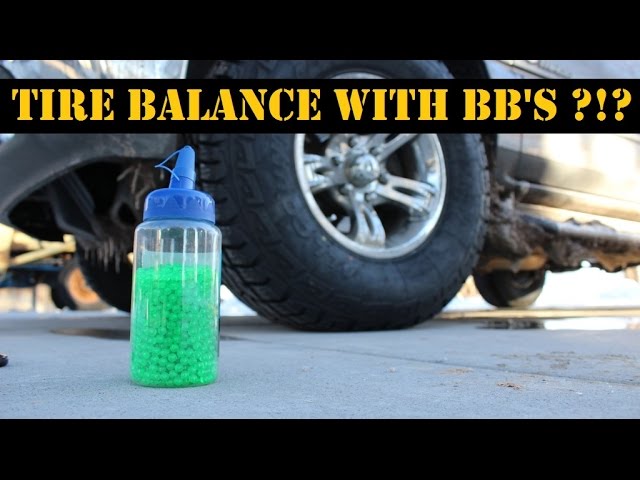
According to the type of supports used, the machines are divided into:
Interesting! On rigid machines, various parts can be tested, but the quality and accuracy of measurements for this reason is reduced.
Most modern workshops are equipped with automatic balancing machines. The master puts the wheel on the shaft, clamps it with bolts and spins it. The sensors determine the points of end runout. The computer determines the intensity of the push and calculates the mass of the load that must be attached to the calculated point. The computer will also tell you if the wheel cannot be balanced. nine0003
One of the newest methods of wheel balancing is the use of special granules instead of weights. The essence of the technique is the filling of special granules into the tire, sliding during movement in the internal space. This free movement eliminates imbalance while moving at speed.
The essence of the technique is the filling of special granules into the tire, sliding during movement in the internal space. This free movement eliminates imbalance while moving at speed.
Modern methods of wheel balancing involve the use of a microbead
The advantage of this method is that the granules are poured once and they perform their intended function throughout the life of the tire. The disadvantage of this balancing method is the high cost of granules. Therefore, balancing in this way has not gained popularity at the present time. nine0003
If the balancing process is carried out in violation of the technology, then the vibration problem will not be solved at best, and at worst it will further worsen. The most common errors:
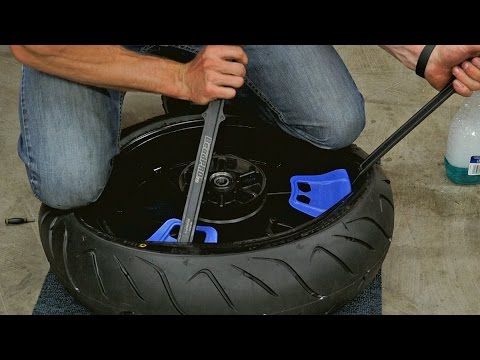 Additional imbalance can break even pebbles stuck in the tread. The overall picture, even on precise equipment, will be violated, and it will not work to bring the wheel to zero. nine0010
Additional imbalance can break even pebbles stuck in the tread. The overall picture, even on precise equipment, will be violated, and it will not work to bring the wheel to zero. nine0010 
In order not to encounter such troubles, it is necessary to carefully choose a car service and control the work of the masters. Qualified specialists give a guarantee for their own work and show the balancing results on the machine display. If the master forbids the presence of the owner of the car during work or does not give a guarantee, it is advisable to refuse his services. nine0003
Wheel balancing is an important element in monitoring the technical condition of the vehicle. A timely procedure will help not only increase the safety and comfort of driving, but also extend the life of the car, preventing premature wear of the parts of the running system.
Rate this article:
(13 votes, average: 4.5 out of 5)
Share with friends!
Adblock
detector
Author: Kirill Savchenko
The modern car owner does not particularly go into the wheel balancing process. He perceives it as a kind of obligatory procedure for seasonal change of shoes and does not even realize how important its quality is.
In fact, the consequences of the imbalance of a rotating body can be seen at home. Try tossing your sneakers into the washing machine and spinning it. The imbalance that appears in the drum will cause it to beat, and with an increase in speed, the washing machine will rumble and shake. Something similar happens with a car whose wheels are out of balance. nine0232
Suspension and wheel bearings, steering elements, even with an imbalance of 10-15 g, receive thousands of beats per minute with an amplitude of 0.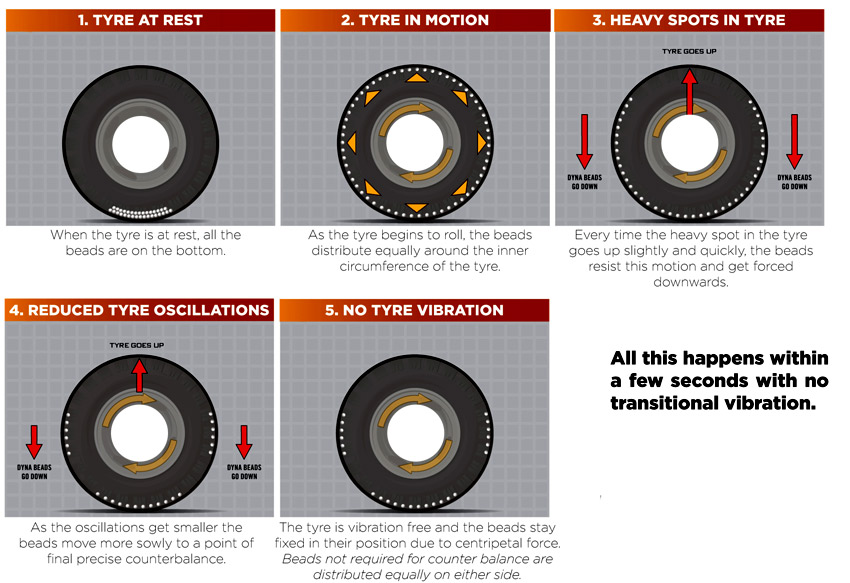 1-0.3 mm. They may be imperceptible to the driver, but act like a concrete hammer. Inexorably destructive. In addition, the imbalance increases tire wear and makes it uneven.
1-0.3 mm. They may be imperceptible to the driver, but act like a concrete hammer. Inexorably destructive. In addition, the imbalance increases tire wear and makes it uneven.
Taking into account that the unbalance will be different on each of the wheels, then when driving at high speeds, the car becomes less stable. It is harder to manage, and on a slippery or wet road, the situation can completely get out of control. nine0003
So, imbalance appears when the center of mass of the wheel does not coincide with the axis of rotation. It would seem that this cannot happen on absolutely new tires or disks, because they are made in compliance with all technological requirements.
Yes, it is, but in any case, the tire does not come out perfect during the manufacturing process. Some of it may be a little thicker and heavier, some thinner and lighter. We are talking about millimeters and grams, which simply cannot be determined. After mounting on a disk, which is also not ideal due to the same technological reasons, a single structure is obtained that has a common center of mass. That is why the wheel is balanced as an assembly. nine0003
That is why the wheel is balanced as an assembly. nine0003
If it were a conditional thin disk, then the balancing would be only static. In this case, it is enough to balance the opposite centers of mass: the minimum and maximum. But a car wheel is wide, and therefore it needs dynamic balancing, on the outside and on the inside.
This is done with the help of special lead or zinc balancing weights weighing 5-60 g. On stamped discs they are fastened with steel clips-latches, on alloy wheels - with self-adhesive strips. It is impossible to correct the imbalance on your own. For this, special balancing machines are used. nine0003
They vary in design, from the simplest to those equipped with laser sensors. The latter allow you to determine not only the imbalance, but also the curvature of the disk or the violation of its geometry. In this case, the owner will be offered to repair the disc or may be denied balancing due to its impossibility.
But even the presence of such a machine in the tire shop will not give any guarantee that the wheels of your car will be balanced correctly.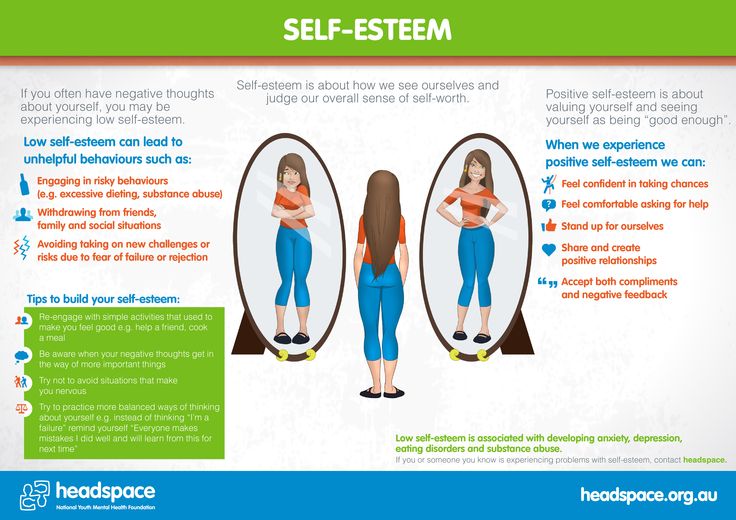 Firstly, the machine must be fixed on a solid, better concrete base and stand strictly horizontally. nine0003
Firstly, the machine must be fixed on a solid, better concrete base and stand strictly horizontally. nine0003
Secondly, it is necessary to enter the correct data on the size of the tire and disk into its electronic unit, and the machine itself must not have wear in the rotating elements and be calibrated. Finally, the master must have the appropriate qualifications and experience - as practice shows, 90% of success depends on this factor.
For example, if a wheel requires a significant amount of weight, he should know that turning the tire around the rim can reduce the imbalance and less weight will be needed. True, not everyone follows this rule, and here's why. nine0003
Changing the position of the tire relative to the rim in order to reduce the mass of weights required for balancing does not always lead to the desired result (the result is not known in advance!).
At the same time, labor costs for balancing and, as a result, its cost increase significantly. At the same time, a very large amount of cargo on the wheel may indicate a low qualification of the worker.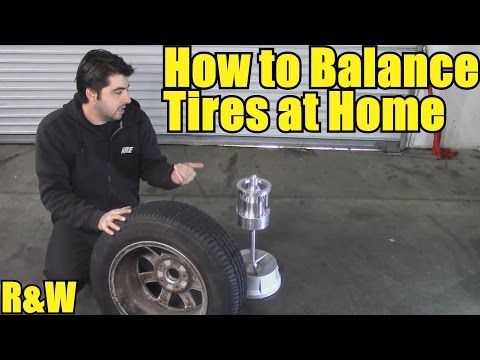 On the other hand, automakers do not specify the maximum mass of weights used for balancing. nine0003
On the other hand, automakers do not specify the maximum mass of weights used for balancing. nine0003
Ceteris paribus, the mass of weights required to compensate for unbalance will be minimal if they are installed at the maximum distance from the center of mass of the disk-tire system, i.e. on the bead flanges.
Installing weights closer to the center of mass of the "disc-tire" system (for example, in order not to spoil the appearance of the disk, an adhesive weight is placed on the inner surface of the rim) will inevitably lead to the need to increase their mass.
Also, the master must clean the tire from the smallest stones in the tread, and the wheel from adhering dirt. In case of deformation, be sure to inform the owner. nine0003
One of the most important things is mounting the wheel on the machine. In most cases, it is attached through the central hole of the disc. From the back, the wheel sits on a cone, and from the front it is fixed with a flange adapter and a clamping nut. This method increases the speed of the balancing process, but does not always provide perfect alignment.
This method increases the speed of the balancing process, but does not always provide perfect alignment.
Special Haweka adapters help improve this. Their essence is that the wheel is clamped on the machine through the holes for the wheel studs. At the same time, the probability of damaging the paintwork of the rim is minimal. In addition, the adapter imitates an almost exact fit of the wheel on the hub and even the required tightening torque. In this case, the balancing accuracy will be higher. Flange adapters are available for various bolt patterns and can be used on any balancing machine. nine0003
After installing the weights of the desired mass in the places indicated by the machine, the verification procedure is carried out again. If necessary, weights are either added or removed, but their weight should not exceed 5 grams. The wheel is considered balanced if the readings on the instrument panel are zero.
So when and how often is wheel balancing necessary? As a rule, in the manuals for the operation of cars, balancing is recommended every 10-15 thousand kilometers. But this is provided that the wheels were not disassembled. nine0003
But this is provided that the wheels were not disassembled. nine0003
That is, if the same wheels are used during seasonal tire changes, balancing is required. It is also necessary if the car has driven several thousand kilometers on bad roads or there have been cases of a wheel falling into a hole. But in this case, not one wheel is balanced, but a pair standing on the same axle.
Commentary of a SHINSERVICE specialist
Alexander Golubev
SHINSERVICE expert
Many drivers make a mistake when vibrations appear in the car, starting with a suspension overhaul or replacement of power unit pillows. The first thing you should pay attention to is the cleanliness of the wheels and tires. Unevenly distributed adhering mud, snow, ice, tar stuck to the tire tread after driving on a road section being prepared for repair - all this can be the cause of imbalance. nine0003
The second important point is the mounting of the wheels. Each of them must be tightened to a torque in accordance with the recommendations of the automaker.
If everything is in order in this regard, then the wheel balance should be checked next. We advise you to do it only in proven specialized services, on certified equipment. And only if the measures taken have not yielded results, we recommend that you proceed to checking the setting of the front wheel angles and checking the condition of the suspension. nine0003
In any case, properly balanced wheels will avoid many problems in the future.
practice tires and wheels
Articles / Practice It's all about centimeters: how to drive through a snowy winter yard Why in the yard, you ask? Because most often inexperienced drivers get stuck in the yard in winter, and not on a cleared road. And it is also easier for them to damage their car in the yard. P... 858 10 1 09. 01.2023
01.2023
Articles / Interesting Faster than they look: 15 best sleepers of 2023 We talked in detail about what sleepers are - these are outwardly inconspicuous cars that can actually give odds to many in traffic light races. And the recently introduced fifth po... 2741 1 1 01/03/2023 nine0003
Articles / Practice Eternal youth: how to prevent the car body from aging Those who bought a new car at least once in their lives experienced a feeling that can be described by the common phrase "if only nothing happened to the swallow." But life is so badly arranged that with la ... 3833 1 four 27. 12.2022 nine0003
12.2022 nine0003
Test drives / Test drive Haval Dargo vs Mitsubishi Outlander: the dog is barking, the stranger is coming In the Haval dealership in the south of Moscow, life is in full swing: buyers look at cars, communicate with managers and sign some papers. While I was waiting for the test Dargo, the same cross... 21258 7 205 13.09.2022
Test drives / Test drive Motor from Mercedes, emblem from Renault, assembly from Dacia: test drive of the European Logan 1.0 It would seem that what's new can be told about the second generation Renault Logan, known to every Russian taxi driver, as they say, up and down? However, this car has.